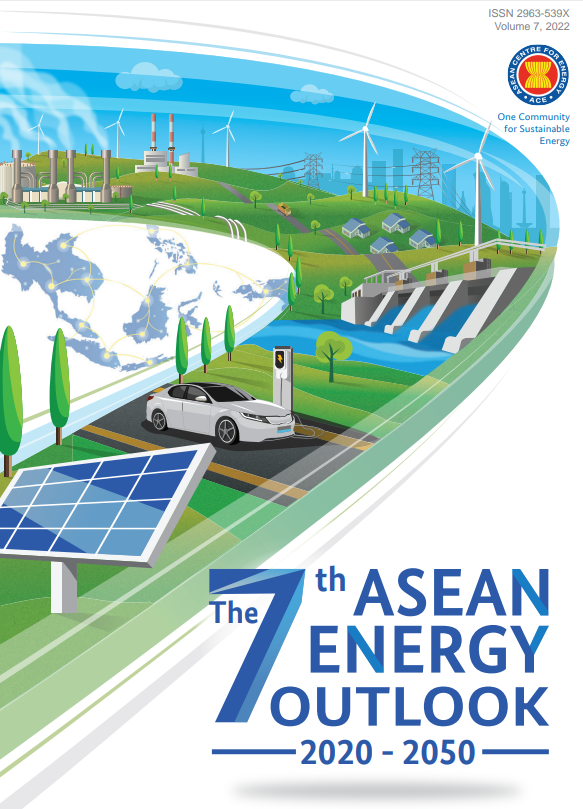
목차
About ACE 4
Acknowledgements 5
Forewords 8
Contents 10
List of Figures 13
List of Tables 16
Executive Summary 18
Report Outline 24
CHAPTER 1 : INTRODUCTION
1.1 ASEAN Socio-Economic and Energy Demand Status 28
1.2 Ensuring Energy Security 32
1.3 Energy and the Covid-19 Crisis 37
1.4 Providing Inclusive Energy for All 39
1.5 Achieving Environmental Sustainability 42
1.6 The Role of Regional Cooperation and the Outlook in Addressing Energy Challenges 44
CHAPTER 2 : METHODOLOGY
2.1 Scenario Overview 50
2.2 Modelling Technique and Data Standardisation 52
2.2.1 Modelling Technique 52
2.2.2 Data Standardisation 54
2.3 Projection Modelling 55
2.3.1 Baseline Scenario 55
2.3.2 AMS Targets Scenario 56
2.3.3 APAEC Target Scenario 58
2.3.4 Least-Cost Optimisation Scenario 59
CHAPTER 3 : EXPLORING MULTIPLE FUTURES
3.1 Energy Demand 64
3.1.1 Residential 67
3.1.2 Transportation 69
3.1.3 Commercial 72
3.1.4 Industrial 73
3.2 Energy Supply 75
3.2.1 Primary Energy Supply 75
3.2.2 Renewable Energy Share 77
3.2.3 Energy Intensity Reduction 78
3.2.4 Energy Imports and Exports 79
3.3 Electricity 81
3.3.1 Installed Power Capacity 81
3.3.2 Power Generation 84
3.3.3 Power Sector Investment 86
3.3.4 ASEAN Power Grid (APG) 87
3.3.5 Battery and Energy Storage Utilisation 91
3.4 Energy Access 92
3.5 GHG Emissions 94
3.6 Social Cost of Energy 97
3.7 Renewable Job Creation 99
3.8 Land Use for Biofuel 100
CHAPTER 4 : ASSESSING MEASURES FOR ENERGY RESILIENCE
4.1 Exploring Technologies for Grid Integration 104
4.1.1 Sector Coupling for Grid Integration of Variable Renewables 104
4.1.2 Flexibility in Sector Coupling 105
4.1.3 Flexibility Options in the Industrial Sector 106
4.1.4 Flexibility Options in the Transportation Sector 109
4.2 Utilising Fossil Fuels during the Transition 111
4.2.1 Oil and Gas 111
4.2.2 Coal 112
4.3 Improving Industrial Efficiency 116
4.3.1 Introduction 116
4.3.2 Necessary Transformations for Fossil Fuels Reduction in the Industry Sector 118
4.3.3 Deep Dive: Iron and Steel 119
4.3.4 Deep Dive: Cement 120
4.3.5 Deep Dive: Chemicals, Petrochemicals, and Plastics 121
4.3.6 Deep Dive: Low to Medium Temperature Heat Industries 123
4.4 Enhancing Dispatchability of Renewable Energy 123
4.4.1 Hydropower 123
4.4.2 Geothermal 125
4.4.3 Bioenergy 128
4.5 Financing Energy Transition 133
4.5.1 Background 133
4.5.2 Status and Needs for Financing in the ASEAN Energy Transition 135
4.5.3 Potential Opportunities for Upscaling Energy Transition Investment in ASEAN 137
4.6 Managing the Safety and Social Acceptance of Nuclear Power 138
4.6.1 Communicating the Facts 138
4.6.2 Nuclear Energy in ASEAN 139
4.6.3 Public Perception and Acceptance 140
4.6.4 Engaging Stakeholders 143
CHAPTER 5 : RECOMMENDATIONS AND IMPROVEMENTS
5.1 Policy Recommendations 146
5.2 Improving and Optimising AEO 150
APPENDICES
Appendix A - Abbreviations 154
Appendix B - References 156
Appendix C - Data by Scenario 162
Appendix D - Modelling Approaches and Key Assumptions 169
Appendix E – Definitions 184
해시태그
관련자료
AI 100자 요약·번역서비스
인공지능이 자동으로 요약·번역한 내용입니다.



